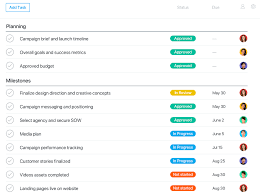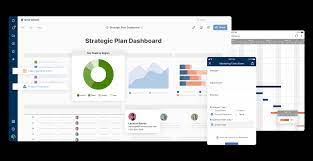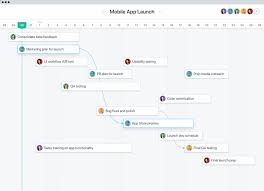Mastering the Art of Project Management: Strategies for Success
The Importance of Project Management
Projects are an essential part of any organisation’s strategy for growth and development. Whether it’s a small-scale initiative or a large-scale endeavour, effective project management is crucial for achieving success.
Project management involves planning, organising, and overseeing the execution of a project from start to finish. It requires careful coordination of resources, time, and tasks to ensure that objectives are met within the specified constraints.
One of the key benefits of project management is that it helps in setting clear goals and defining a roadmap for achieving them. By breaking down the project into manageable tasks and creating a timeline for completion, project managers can keep teams focused and on track.
Another important aspect of project management is risk assessment and mitigation. By identifying potential risks early on and developing strategies to address them, project managers can minimise disruptions and keep the project on course.
Communication is also a critical component of successful project management. Clear and effective communication among team members, stakeholders, and clients ensures that everyone is aligned on goals, expectations, and progress.
Furthermore, project management helps in resource allocation and budgeting. By carefully managing resources such as time, money, and personnel, project managers can optimise efficiency and maximise productivity.
In conclusion, project management plays a vital role in the success of any endeavour. By implementing sound project management practices, organisations can increase their chances of delivering projects on time and within budget while meeting stakeholder expectations.
Seven Essential Tips for Successful Project Management
- Define clear project objectives from the start.
- Create a realistic project timeline and schedule regular progress reviews.
- Assign roles and responsibilities to team members to ensure accountability.
- Communicate effectively with all stakeholders throughout the project.
- Manage risks proactively and have contingency plans in place.
- Track project expenses and stay within budget constraints.
- Celebrate milestones and successes to boost team morale.
Define clear project objectives from the start.
Defining clear project objectives from the start is a fundamental tip in effective project management. By establishing specific, measurable, achievable, relevant, and time-bound (SMART) goals at the outset, project teams can align their efforts towards a common purpose. Clear objectives provide a roadmap for the project, guiding decision-making processes and keeping stakeholders focused on the desired outcomes. When project objectives are well-defined from the beginning, it sets a solid foundation for success and helps to prevent scope creep or misalignment later in the project lifecycle.
Create a realistic project timeline and schedule regular progress reviews.
Creating a realistic project timeline and scheduling regular progress reviews are essential practices in effective project management. By setting achievable milestones and deadlines, teams can stay on track and maintain momentum towards project completion. Regular progress reviews allow for monitoring of tasks, identification of potential delays, and adjustment of plans as needed to ensure that the project stays on course. This proactive approach helps in addressing issues promptly and maintaining transparency with stakeholders, ultimately leading to successful project outcomes.
Assign roles and responsibilities to team members to ensure accountability.
Assigning roles and responsibilities to team members is a crucial step in effective project management. By clearly defining who is responsible for what tasks, accountability is established within the team. This not only helps in distributing workload efficiently but also ensures that each team member knows their specific role in achieving project objectives. Accountability fosters a sense of ownership and commitment, leading to improved teamwork and ultimately, greater project success.
Communicate effectively with all stakeholders throughout the project.
Effective communication with all stakeholders throughout the project is paramount to its success. By keeping stakeholders informed and engaged at every stage, project managers can ensure alignment on goals, expectations, and progress. Regular updates, clear reporting, and open channels of communication help to build trust and collaboration among team members, clients, and other parties involved. Addressing concerns promptly and seeking feedback proactively can lead to smoother project implementation and ultimately contribute to achieving desired outcomes.
Manage risks proactively and have contingency plans in place.
Managing risks proactively and having contingency plans in place are essential components of effective project management. By identifying potential risks early on and developing strategies to mitigate them, project managers can anticipate challenges and prepare for unforeseen circumstances. Having contingency plans in place ensures that the project team is equipped to respond swiftly and effectively to any disruptions, minimising their impact on the project timeline and overall success. This proactive approach not only enhances resilience but also instils confidence among stakeholders, demonstrating a commitment to delivering results despite potential obstacles.
Track project expenses and stay within budget constraints.
Tracking project expenses and staying within budget constraints is essential for the successful execution of any project. By closely monitoring expenditures and comparing them to the allocated budget, project managers can ensure financial transparency and accountability throughout the project lifecycle. Effective expense tracking enables timely identification of cost overruns, allowing for prompt corrective action to be taken to bring the project back on track. Adhering to budget constraints not only demonstrates financial discipline but also contributes to overall project success by ensuring that resources are optimally utilised and that the project remains financially viable.
Celebrate milestones and successes to boost team morale.
Recognising and celebrating milestones and successes within a project is a powerful way to boost team morale and motivation. By acknowledging the hard work and achievements of team members, you not only create a positive work environment but also inspire individuals to continue striving towards success. Celebrating milestones fosters a sense of accomplishment and camaraderie among team members, reinforcing their dedication to the project’s goals. This practice not only boosts morale but also encourages teamwork, collaboration, and a shared sense of achievement within the project team.









